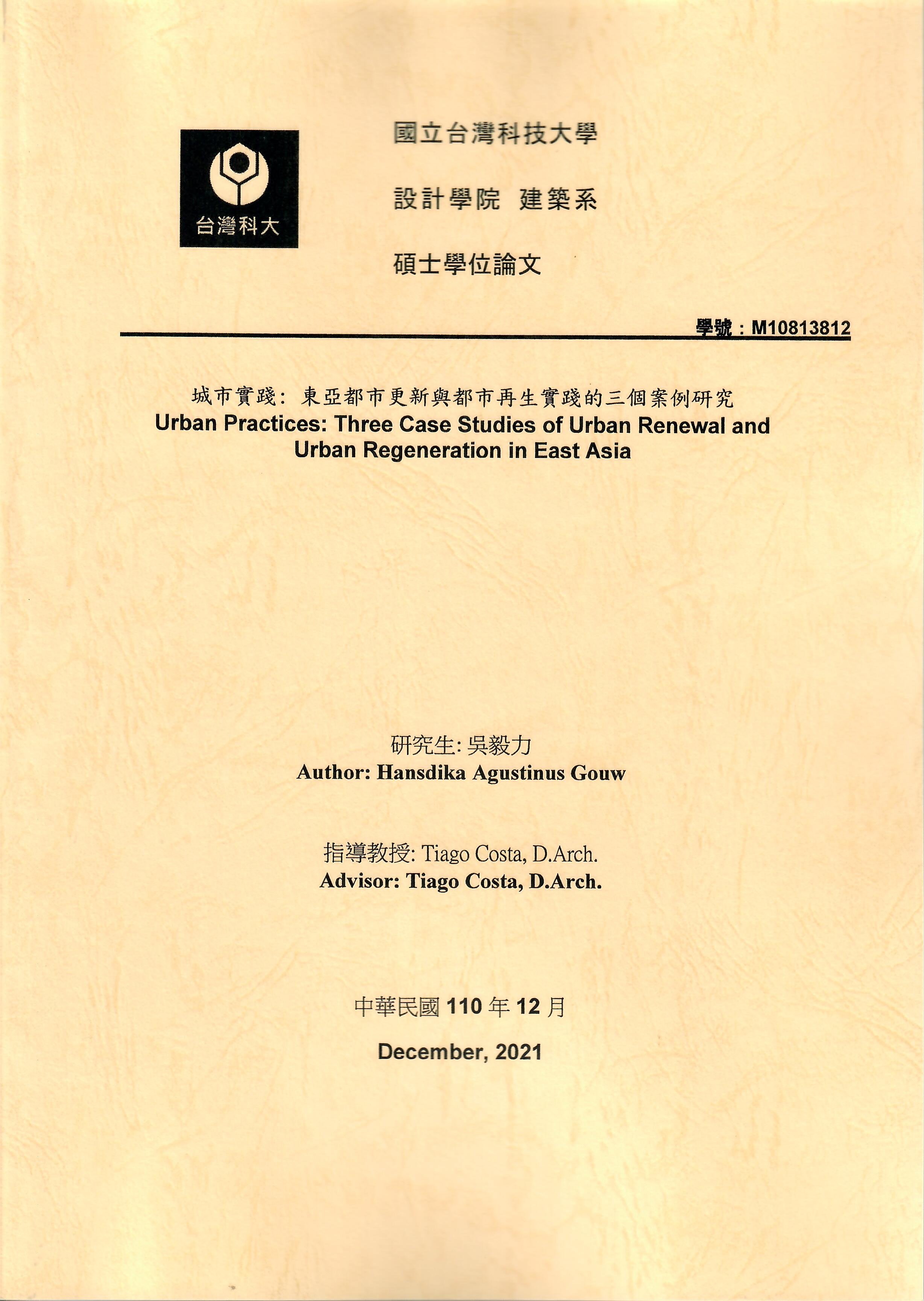Urban Practices: Three Case Studies of Urban Renewal and Urban Regeneration in East Asia by HANSDIKA AGUSTINUS GOUW, MASTER OF ARCHITECTURE THESIS
Urban renewal is one of the broadly used practice to redevelop and improve dilapidated urban area and give provision of formal housings , whilst urban regeneration encompasses other aspects of economic, social, and culture while improving the environment. While foreign experiences already implement comprehensive preservation and improvement on the physical and non-physical features of an urban area, the practice in Taiwan still results in loss of original urban fabrics and forced residents’ participation. The present research focuses to study deeper about the urban renewal practice in Taiwan and earn some lessons from the neighboring countries in East Asia, such as China and South Korea. Conducted via literature review, the comparative research method is used to study the similarities and differences of the urban renewal practices based on comparative variables including strategies, institutional roles, stages, and unique characteristics.
The research evidenced that Lanzhou and Siwen project denotes how the favorable choice of reconstruction method causes the loss of urban fabric, correlatively the project also demonstrated a long process of obtaining residents’ consents which still ended with forced process. Conceding this, the lessons from China and South Korea can improve the urban renewal practice in Taiwan. Specifically, a more tactful design method and far-reaching benefits to all stakeholders and built environment can perform as solutions to the issues above.
Keyword: Urban renewal, Urban regeneration, Micro-renewal, Preservation of urban fabric, Urban renewal design method, Residents empowerment in urban practices
